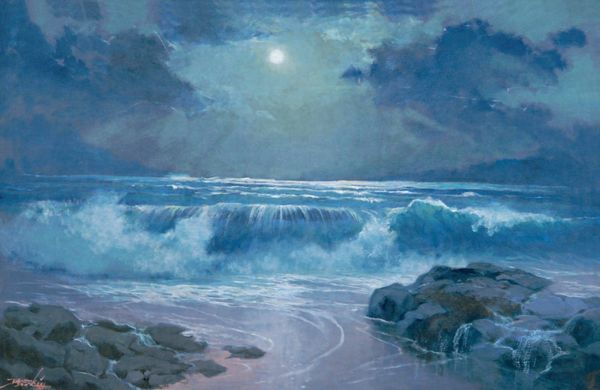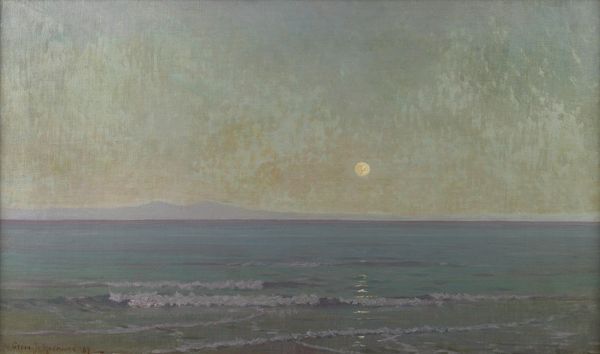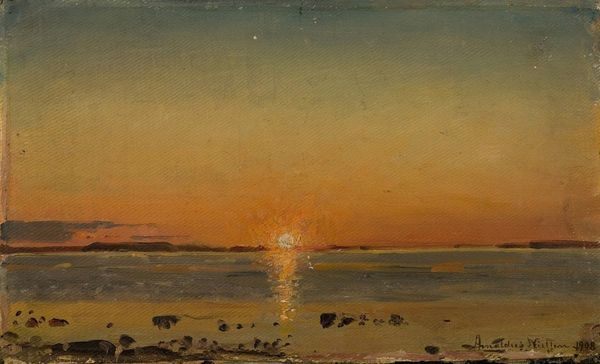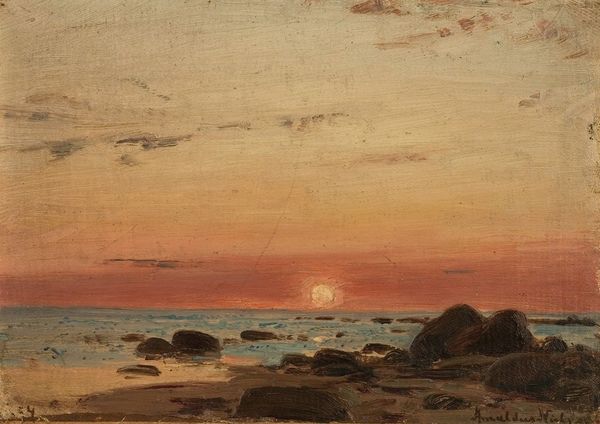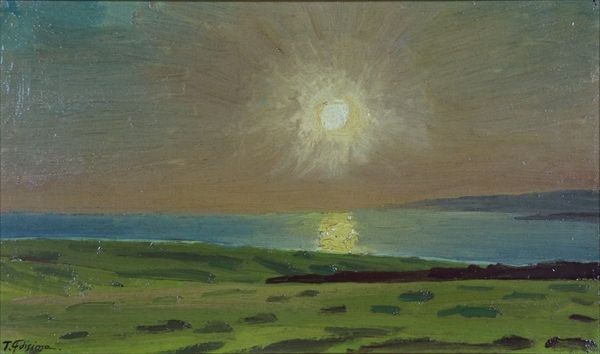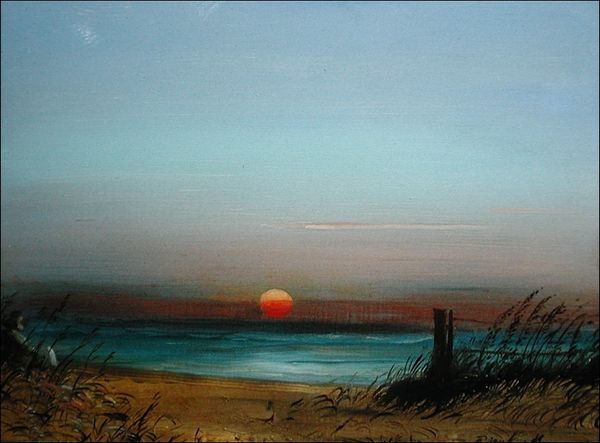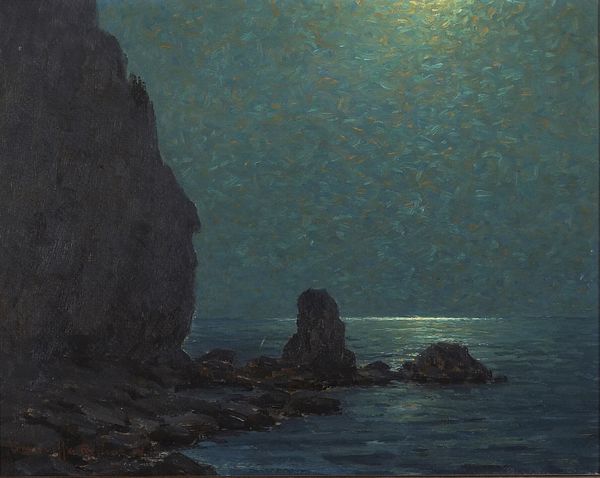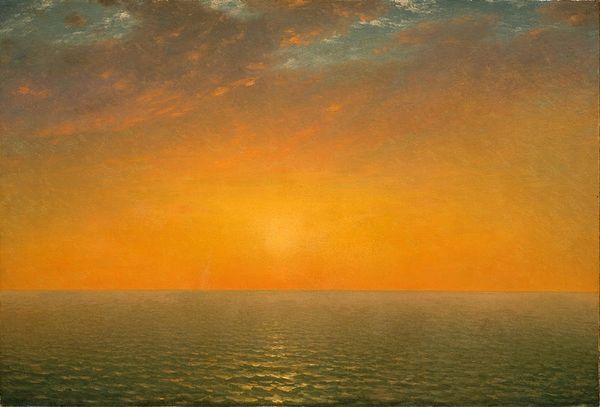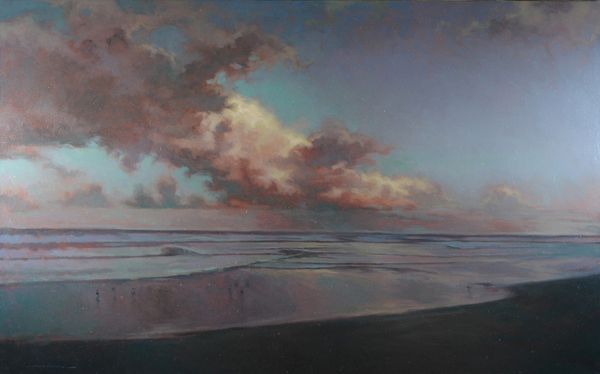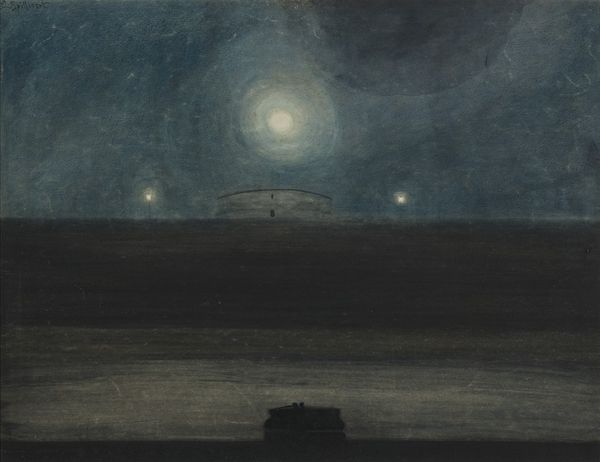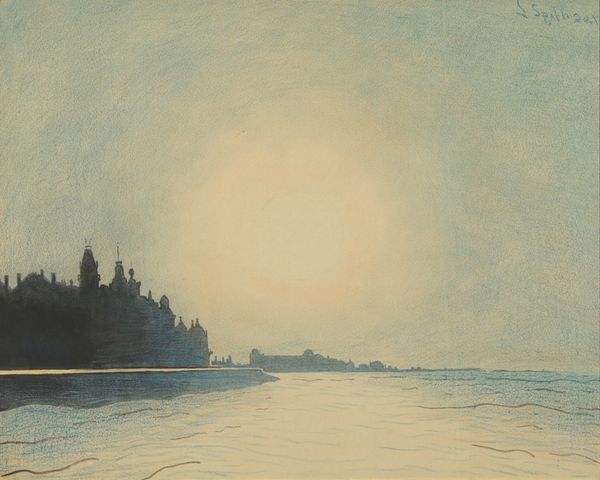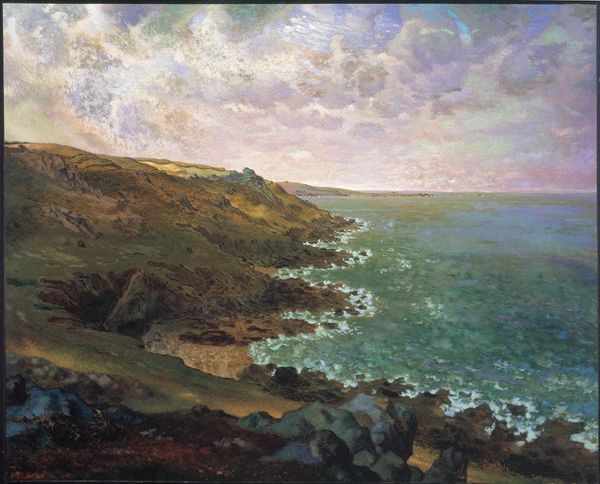
Copyright: Public domain US
Curator: Immediately striking, isn’t it? Such stillness—an almost meditative quality. Editor: Indeed. This is Rockwell Kent’s “Calm and Free (Maine Coast)," painted in 1909. An oil painting made en plein-air during Kent’s time at Monhegan Island. Curator: The composition is elegantly simple. A broad, dark foreground of rocky land leads the eye to the calm expanse of ocean and, ultimately, to that intense, almost blinding sun dominating the upper register. It is very clear that a high value contrast enhances a feeling of Romanticism, isn't it? Editor: And consider Monhegan itself. It was becoming an artist colony around that time, a place of refuge and inspiration. The artistic circles promoted there might have influenced Kent as his style leaned toward a simpler realism—something evident in the figures dotting the coastline, perhaps signifying mankind’s own quiet appreciation and participation to this immensity of the view. Curator: Yes, though those figures also serve to emphasize the painting's perspective. Their tiny forms underscore the scale of the landscape—the vastness of the ocean, the imposing sky, and overall natural display, inviting feelings of transcendence. Editor: We should note that Kent himself had complex sociopolitical beliefs which found themselves intertwined in his work—that searching for a “simpler life” during a time of rapid industrialization. His connection to leftist circles and themes are critical in contextualizing not only what we see here, but also the lifestyle of the era when it was made. The painting goes beyond nature, becoming a comment of that longing from the American spirit of the early XX century. Curator: A painting like this really forces you to consider what’s intrinsic. The layering of color values, how they transition or abut…they all signal toward those romantic sensibilities. But, I can recognize that understanding the artist’s beliefs and what these locations mean help the understanding as a whole. Editor: Ultimately, regardless of your angle, Kent captures not just a place but a feeling—something universal. It shows how the human figure has found places and shapes its life close to nature, under new and old life codes. Curator: A view like this always seems very thought-provoking from the purely sensorial, without taking history into account... Thanks for guiding my way! Editor: The pleasure was mine, indeed. Seeing artworks is nothing without a strong consideration on history too, if you want my opinion.
Comments
No comments
Be the first to comment and join the conversation on the ultimate creative platform.
